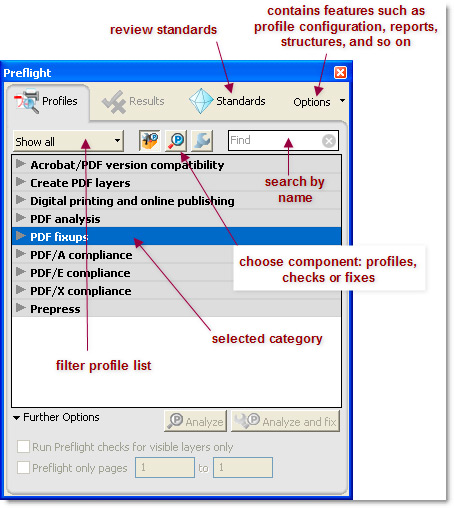
Just skimming through the guide there are a few things that are out-of-date or flat out wrong. I think you have to take any guide like this with some skepticism, although if the magazine is asking you to use it as their guide you don't have much choice. There is nothing there that helps me solve my issue. I had already read the prior thread and have the PDF. Have you tried loading with no documents open? Selecting a region changes the language and/or content on 'm not having a problem loading it in CC2014. You can examine how your document’s colors look when reproduced on a particular output device. If you’re using a color-managed workflow, you can use the precision of color profiles to perform an onscreen preview (a soft proof).
BASIC PREFLIGHT INDESIGN PROFESSIONAL
For best viewing, use Acrobat 8 Professional or later. In addition, make sure that the service provider has Acrobat 7.0 or later for accurate viewing of text and color graphics.
BASIC PREFLIGHT INDESIGN PDF
If you choose to leave out the images when creating the Adobe PDF file, make sure that the service provider has access to the original high-resolution images that are required for proper output. Various prepress applications and in-RIP technologies can also perform preflight checks, do trapping and imposition, and make the color separations of the pages in the digital master. Subsequent versions of Acrobat Professional contain more advanced preflight tools, including the ability to make certain corrections automatically. (See Choose which layers are printed or exported to PDF.)Ī service provider can use Acrobat 7.0 Professional and later to perform preflight checks and color separations. You can exclude hidden or nonprinting layers from the exported PDF document. Alternatively, you can choose to convert RGB images to CMYK in the Export Adobe PDF dialog box (Output category). Use only high-resolution images in your document.įor best results, use only CMYK images in a four-color-process job. If your document is going to be separated, you can preview the separations and ink coverage limits using the Separations Preview panel. However, if your service provider wants you to flatten transparency, submit a PDF/X‑1a compliant file. Flattening is performed as late in the workflow as possible, preferably by the service provider. If your artwork contains transparency, ask your prepress service provider if they want to receive flattened or unflattened PDF files. If your artwork contains transparency (including overprints and drop shadows) and you require high‑resolution output, it’s a good idea to preview the effects of flattening using the Flattener Preview panel before saving the file. The Summary area includes a warning section that indicates when preset settings can’t be honored. View your Adobe PDF export settings before exporting, and then adjust them as necessary. Use the InDesign Preflight feature to ensure that image resolution and color spaces are correct, that fonts are available and can be embedded, that graphics are up-to-date, and so on. Then, at the appropriate time in the workflow, your service provider can either output the PDF directly, or process it using tools from various sources for post-processing tasks such as preflight checks, trapping, imposition, and color separation. These digital masters are compact, reliable files that you or your service provider can view, edit, organize, and proof. In response, Adobe and its partners continue to create reliable, PDF-based publishing workflow solutions.įrom InDesign, you can export your document to a composite PDF file called a digital master.

In addition, reliability problems such as missing fonts, corrupt files, missing graphic elements, and unsupported features can result at output time. Because applications generate PostScript in many different ways, PostScript files can be arbitrarily large and complex. Once approved, the files are saved in PostScript or a proprietary format for prepress work and final printing. In some print publishing workflows, documents are distributed in the format of the authoring application (called the native format). Print thumbnails and oversized documents.InDesign cloud documents | Common questions.Find and replace using GREP expressions and queries.Create, add, and manage dictionaries and words.Check spelling, autocorrect, and dynamic spelling.Align and distribute objects using rulers.Understand a basic managed-file workflow.Convert QuarkXPress and PageMaker documents.


 0 kommentar(er)
0 kommentar(er)
